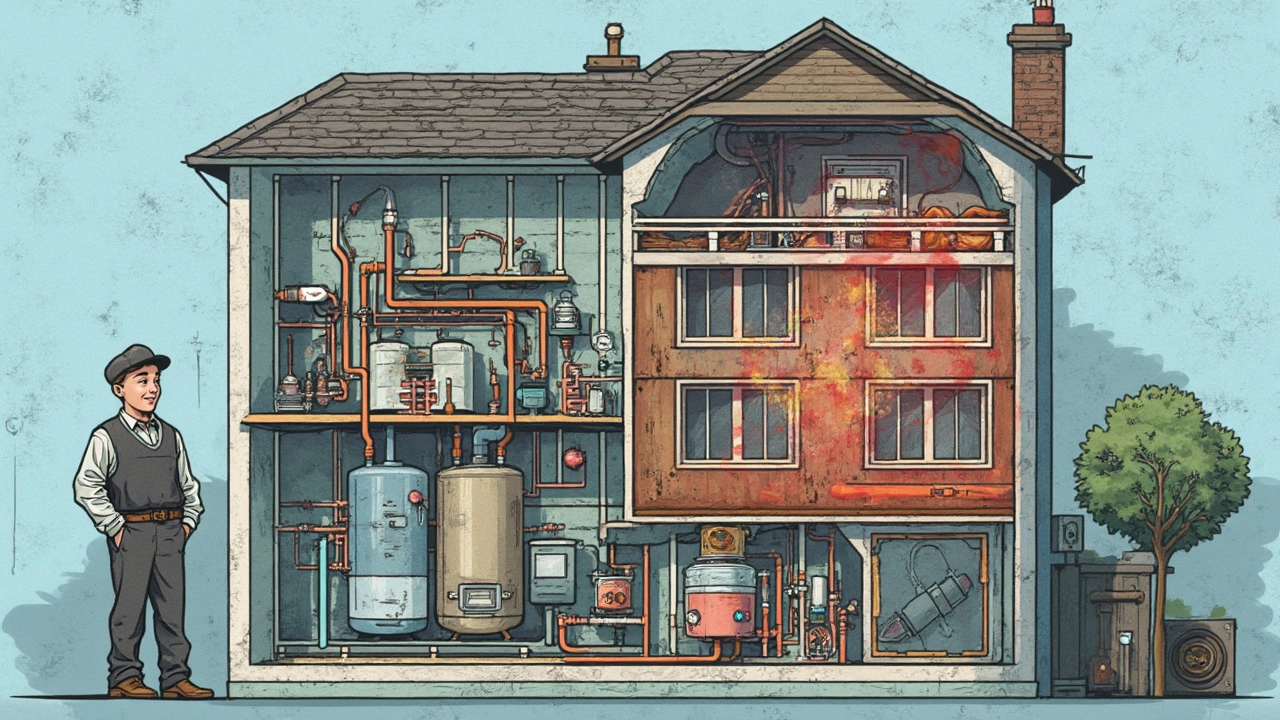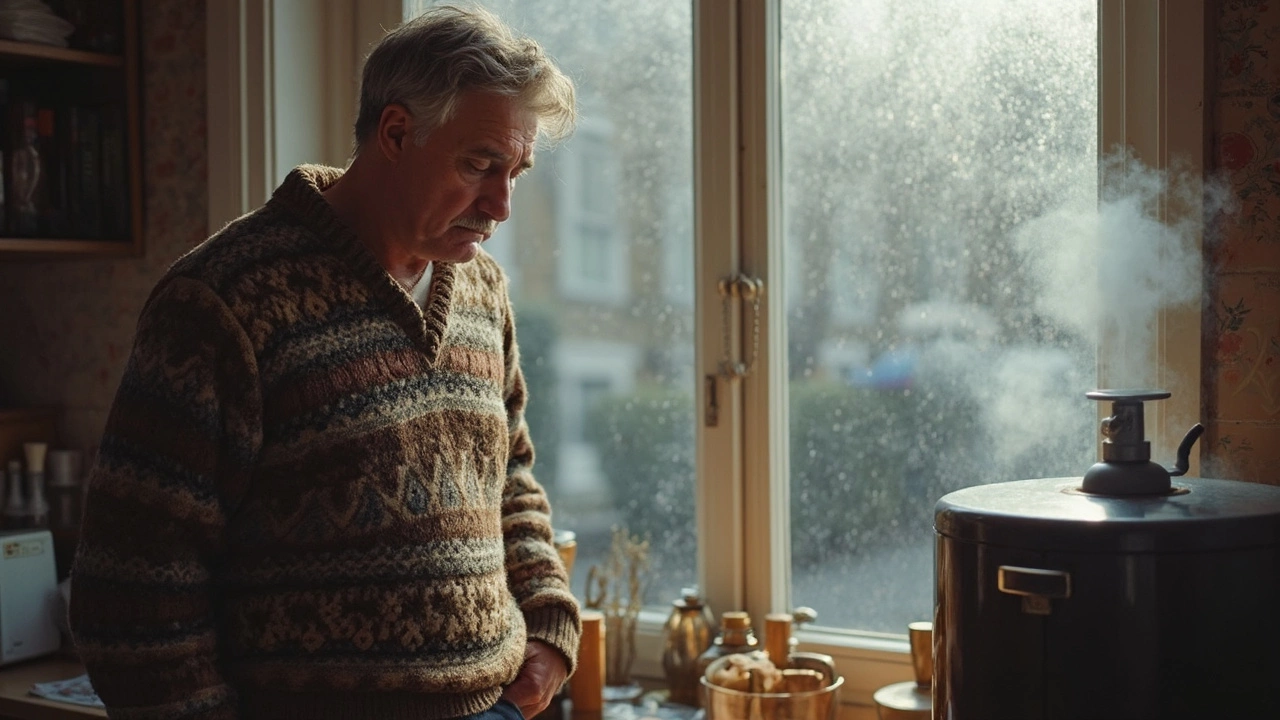Nothing quite messes up your morning like a cold shower when you were expecting a warm one. So, what's going on when your trusty water heater is suddenly on the fritz? There can be a few reasons for this chilly surprise, and knowing where to start looking can save you time and a call to the repairman.
First things first, identify if the water heater itself is the problem. Have you checked if the pilot light is still on for gas heaters? Sometimes, a simple power outage or a gust of wind can blow it out. For electric heaters, ensure the circuit breaker hasn't flipped. These are easy fixes that could get you back to hot showers in a jiffy.
If those aren't the issues, it might be time to roll up your sleeves and troubleshoot a bit deeper. Is the thermostat dialed in correctly? Believe it or not, sometimes it's just been accidentally turned down. If everything seems in order but the water is still cold, there might be sediment built up or an issue with the heating elements themselves. These are trickier fixes, so keep reading for more specific advice on handling these situations.
- Identifying the Problem
- Common Causes of Cold Water
- Troubleshooting Tips
- When to Call a Professional
- Preventative Maintenance
Identifying the Problem
Before you jump to conclusions about your water heater acting up, it's crucial to pinpoint exactly what's causing this chilly water situation. Starting with the basics can make a big difference in getting your hot water back on track without unnecessary headaches.
Check the Power Supply
For electric water heaters, the first thing you'll want to do is verify that it's getting power. Head over to your circuit breaker panel and see if any switches have tripped. If your heater's switch is off, flick it back on and see if that solves the issue.
Inspect the Pilot Light
If you've got a gas heater, the pilot light is a key player. Open the access panel and take a peek. Can you see a small flame? If not, you'll need to relight it. This usually involves turning the gas control to the off position, waiting a few minutes, then setting it to pilot and using a lighter to ignite it.
Is the Thermostat Set Right?
Another common hiccup is the thermostat setting. Ideally, it should be around 120°F (49°C). If it's set lower, your water might not be hot enough. Adjust it carefully and give it some time to heat up before close to maximum temperatures increase the risk of scalding and might not be energy-efficient.
Look for Leaks
If everything above checks out, take a moment to inspect your tank and surrounding pipes for leaks. Water on the floor could mean your tank's leaking, which can be a more serious issue requiring immediate attention.
Flush the Tank
Over time, sediment builds up in the bottom of the tank, affecting its efficiency. If it's been a while since you last flushed it, this could be the culprit. Drain a few gallons from the drain valve to see if that helps restore performance.
By following these steps, you're more likely to zero in on why your water's run cold and what you can do next. This approach can save you time and frustration, and help you decide if it's something you can tackle yourself or if it's time to call in the pros.
Common Causes of Cold Water
So, your water heater's got a case of the chills. Before it gets in the way of your comfy routine, let’s figure out what might be causing it. Here are a few common reasons your heater’s not warming up.
Pilot Light Issues
The pilot light is crucial for a gas water heater. Without it, there's no ignition source for heating the water. Check if it's lit. If it's not, relight it following the instructions on your unit’s panel or manual. If it keeps turning off, it might be a faulty thermocouple.
Tripped Circuit Breaker
If you have an electric heater, a tripped circuit breaker can cut off power, leaving the water cold. Take a look at your breaker panel and if the switch is flipped, reset it. If it keeps tripping, you could have a bigger issue at play.
Faulty Thermostat
The thermostat controls the water temperature. If it’s set too low or malfunctioning, cold water is inevitable. Adjust it to a higher temperature. If that does the trick, great! If not, consider replacing the thermostat.
Sediment Build-Up
Over time, minerals in water can settle at the bottom of the tank, affecting efficiency in water heaters. This sediment can insulate the water from the burner, leaving you shivering. Regular flushing of your tank can help prevent this from happening.
Broken Heating Element
Electric heaters rely on heating elements. If they’re faulty, expect cold water. Test for continuity using a multimeter. A lack of continuity means it’s time for a replacement.
These issues cover a good chunk of what might be causing the problem. If you’ve run through each of these without luck, it could be time to call in a professional for help or consider replacing your water heater.

Troubleshooting Tips
So, your water heater is throwing a cold water tantrum? Don't panic—there are a bunch of things you can try before giving up and calling in a pro. Digging into these steps can not only save you some cash but also teach you a thing or two about how these machines tick.
Check the Power Supply
First, let's make sure your water heater actually has power. For a gas heater, check if the pilot light is on. It could have blown out due to a draft or maybe the gas valve was turned off by mistake.
For electric heaters, inspect the circuit breaker. If it flipped, switch it back on. Yay, problem solved! But if it keeps tripping, it might be time to call an expert.
Examine the Thermostat Settings
Ensure the thermostat is set correctly. For most households, a setting between 120 to 140 degrees Fahrenheit is ideal. If it's set lower, you might just be dealing with lukewarm water.
Look for Sediment Buildup
Over time, minerals from your water can settle at the bottom of the tank, causing all sorts of issues like knocking sounds or less efficient heating. Flushing the tank could help in this situation:
- Turn off the electricity or gas to the heater.
- Connect a hose to the tank's drain valve and lead the other end to a safe drain location.
- Open the valve and let it drain completely.
- Close the valve and refill the tank.
Do this once a year to keep things running smoothly.
Inspect the Heating Elements
In electric heaters, if sediment isn't the culprit, you might have a busted heating element. They can be replaced with a bit of know-how, but if you're unsure, professional help is the way to go.
Conclusion: When DIY Doesn't Cut It
If you've run through all these steps and still see no improvement, it might be time to contact a professional. Persistent issues could indicate something more serious that requires a trained eye.
Taking these steps not only helps you in the moment but also gives you a pool of knowledge to draw from the next time your water heater decides to take a break. After all, mastery of household hacks is always a good look, right?
When to Call a Professional
Trying to fix your water heater yourself can be rewarding, but there are moments when it’s wiser to bring in the pros. So, when is it time to throw in the towel and reach out for professional help?
First up, if there’s any leak and you’re unsure where it’s coming from, call a professional. Water leaks can cause serious damage to your home and can be tricky to diagnose without proper tools.
Electrical Issues
If your heater keeps tripping the circuit breaker, it’s not something you want to mess around with. Electricity and water don’t mix well, and tackling electrical issues without the right expertise can be dangerous.Complex Mechanical Problems
When you’ve picked at every logical explanation for your cold water issue and still can’t find the cause, it’s time to call someone who really knows these things inside out. Professionals have the experience to identify issues like faulty thermostats or failed heating elements that often go unnoticed.Additionally, if there’ve been frequent problems with your heater and nothing seems to last, they might recommend a replacement. It's a bigger upfront cost but can save you in the long run.
If you’re not sure whether it’s worth involving a professional, consider the costs against future issues and potential damage. In those cases, choosing to hire a professional is more about smart prevention.
Keeping in mind these points, getting help for your water heater repair at the right time can keep you safe and your home in good shape.

Preventative Maintenance
Keeping your water heater in top condition doesn't need to be a massive chore. A bit of regular care goes a long way in preventing cold water surprises.
Regular Flushing
One of the simplest things you can do is flush the water heater every six months. This helps remove any sediment that builds up and can affect heating efficiency. To do this:
- Turn off the power or gas to the water heater.
- Connect a hose to the drain valve to direct water outside or to a drain.
- Open the drain valve and let the tank empty.
- Close the valve, remove the hose, and turn the water and power back on.
By flushing regularly, you keep your heater working effectively, saving energy and reducing wear and tear.
Checking the Pressure Relief Valve
The pressure relief valve is crucial for safety. Test it every six months by lifting the lever to ensure it's functioning. If nothing happens or there's a leak, it might be time for a replacement.
"Routine maintenance not only prolongs the life of your equipment but also ensures efficiency," says Rebecca Whitmore, a home systems expert from HomeTech Insights.
Insulating the Tank
During the colder months, consider insulating your heater's tank to keep it from losing heat. A simple water heater blanket, available at most home stores, can keep your heater cozy.
Temperature Dials
Set the thermostat to a maximum of 120°F to prevent scalding and save on energy bills. Plus, it'll slow down sediment buildup in the tank.
Lastly, if you're concerned about keeping your water heater long-lasting, an annual professional inspection helps catch potential problems early.


